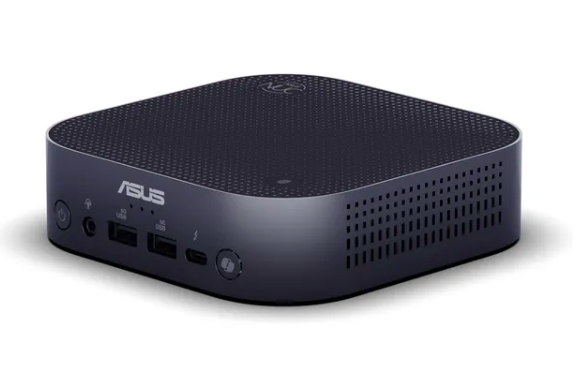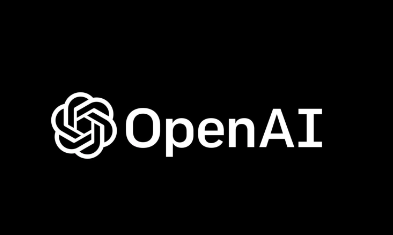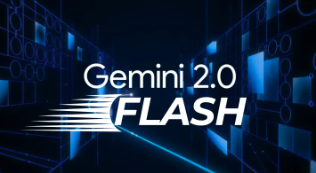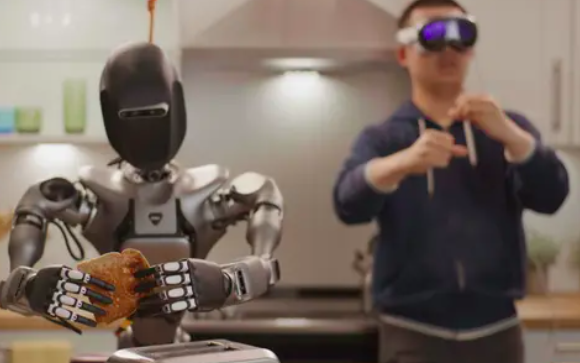Microsoft’s AI Revolution: Mini PCs with Copilot Plus Take Center Stage
Microsoft is gearing up to redefine personal computing with the upcoming launch of AI-powered mini PCs featuring Copilot Plus. Unveiled ahead of CES 2025, these devices are designed to integrate AI capabilities into everyday computing, boasting advanced features like Recall, Click To Do, and AI-assisted image editing in Windows 11. Asus and Geekom are leading the charge with innovative models like the NUC 14 Pro AI and Snapdragon-based mini PCs. These devices cater to varying needs, from powerful desktops to lightweight laptops, promising enhanced productivity and smarter workflows.

The introduction of Copilot Plus marks a significant leap in AI integration, hinting at a future where AI functionalities are seamlessly embedded in compact hardware. Microsoft’s ambitions extend beyond PCs, with potential applications in wearable tech and third-party models for Microsoft 365 Copilot. This innovation signals a bold step towards making AI accessible and indispensable for modern users, bridging the gap between futuristic technology and everyday convenience.
OpenAI O3: The Next Leap Toward Human-Level AI Intelligence”
OpenAI has unveiled its latest AI model, O3, which sets new standards in artificial intelligence with human-like reasoning capabilities. This advanced model has achieved unprecedented scores on benchmarks like ARC-AGI, showcasing three times the reasoning performance of its predecessor. With improvements in complex coding, advanced mathematics, and logical problem-solving, O3 demonstrates OpenAI’s commitment to pushing the boundaries of AI intelligence. A smaller, efficient variant, O3-mini, has also been introduced to cater to diverse computational needs.

The debut of O3 highlights OpenAI’s focus on developing AI systems that mimic human thought processes. While it sparks excitement in the tech community, it also invites broader discussions about the implications of achieving human-level intelligence in AI. Positioned as a rival to Google’s Gemini 2.0, O3 reflects the intensifying race among AI pioneers to create models that are not only smarter but also more aligned with practical, real-world applications.
Google’s Gemini ‘Thinking Mode’: A New Era of AI Reasoning
Google has introduced the groundbreaking “Thinking Mode” in its Gemini AI model, an innovative feature designed to enhance logical reasoning and decision-making. This mode enables Gemini to tackle complex tasks by explicitly outlining its thought process, making it more transparent and efficient in solving intricate problems. Users can experience a structured, step-by-step explanation of Gemini’s reasoning, offering better insights into its capabilities for both text and visual-based challenges.

The Thinking Mode sets Gemini apart in the AI landscape, emphasizing Google’s commitment to creating AI systems that are not just powerful but also interpretable. As an experimental feature accessible through Google’s AI Studio, it highlights a shift towards making AI more aligned with human cognitive processes. This development underscores the growing demand for smarter, more accountable AI models that can support users in critical decision-making scenarios.
Nvidia’s Vision for Robotic Domination in 2025
Nvidia is making bold moves to establish itself as a leader in the robotics revolution, with ambitious plans to dominate the industry by 2025. Central to this vision is the upcoming release of Jetson Thor, a new generation of compact, high-performance computers designed to power humanoid robots. This cutting-edge platform combines advanced AI capabilities with unparalleled computing power, enabling robots to perform complex tasks with precision and efficiency. Nvidia’s initiative aims to provide scalable solutions for industries ranging from manufacturing to healthcare.

With the robotics market poised for exponential growth, Nvidia’s strategic focus reflects its intent to stay ahead in this competitive landscape. By positioning Jetson Thor as a core technology for next-gen robotics, Nvidia not only aims to fuel innovation but also to create a foundation for widespread adoption of AI-powered robots in various sectors. This visionary approach underlines the company’s role in shaping the future of robotics and AI integration.
OpenAI Explores Humanoid Robotics: A Leap Towards Physical AI Integration
OpenAI has reportedly considered venturing into the development of humanoid robots, marking a potential shift in its strategy to integrate AI into physical embodiments. While the company is renowned for its advanced AI models like GPT, this move indicates an interest in expanding its capabilities beyond software into hardware. If pursued, such robots could showcase OpenAI’s AI systems in real-world scenarios, providing new opportunities for testing and innovation.

This exploration aligns with a broader trend of AI leaders delving into robotics to bridge the gap between virtual intelligence and physical application. Although no concrete plans have been announced, OpenAI’s potential entry into humanoid robotics could intensify competition in the sector, as other players like Tesla and Boston Dynamics are also pushing the boundaries of what robots can achieve. This development signals a promising future for AI’s role in transforming industries and everyday life.
